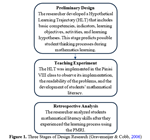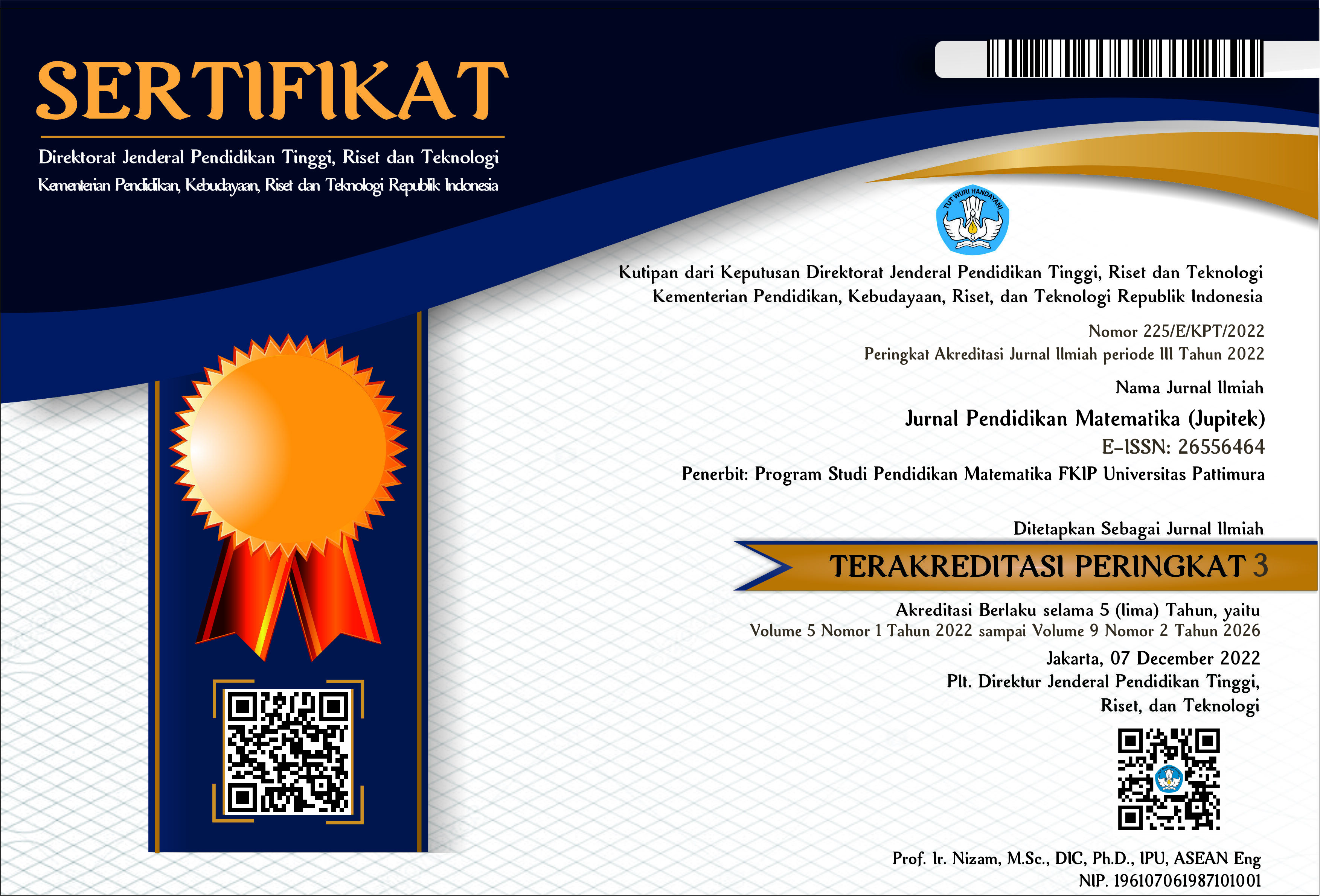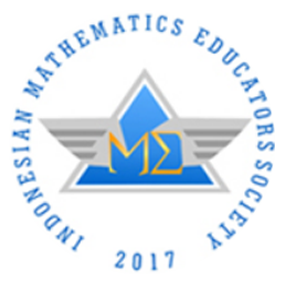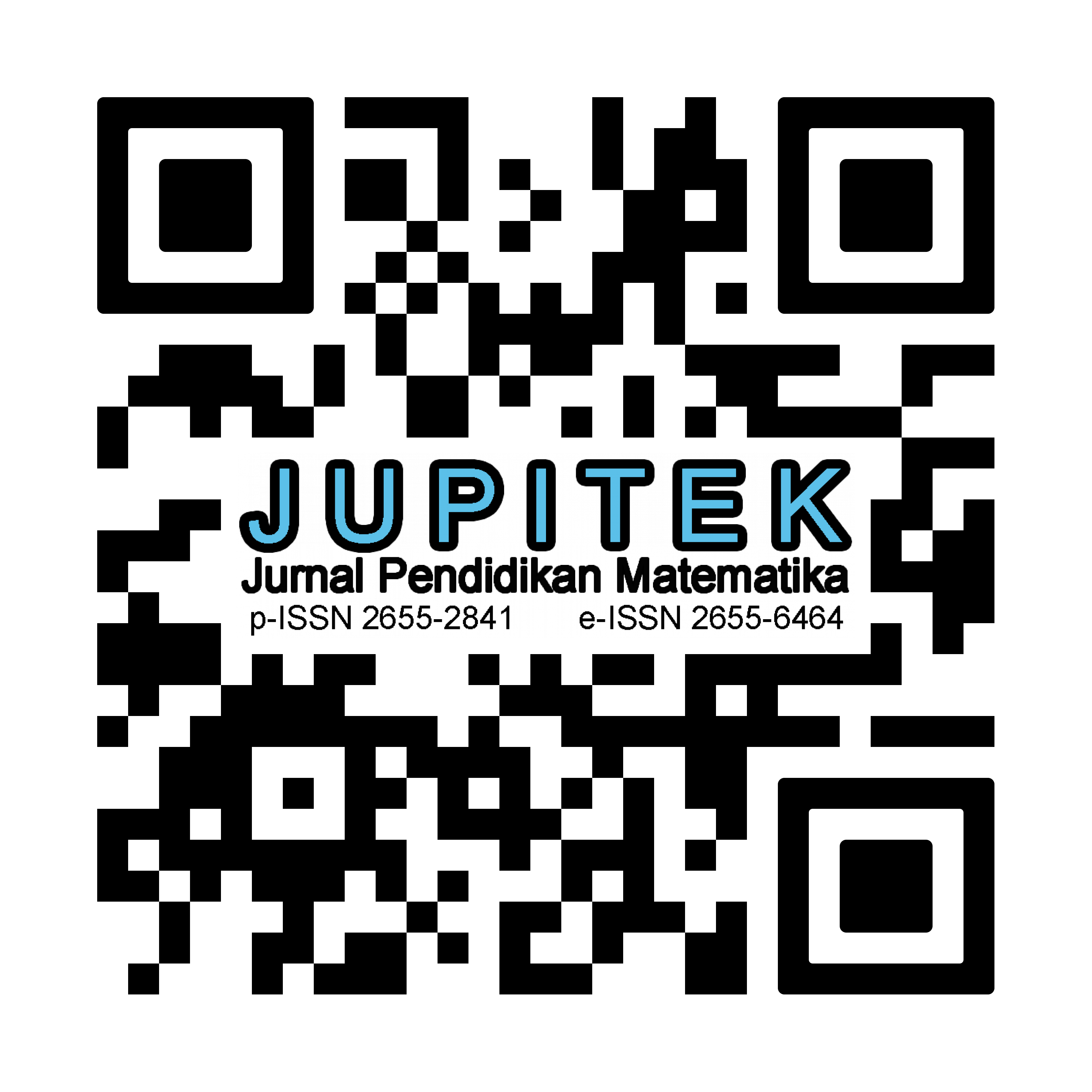Developing Mathematical Literacy Using the Ramayana Ballet Context with Indonesian Realistic Mathematics Education
Abstract
This article emphasizes the importance of the PMRI and ethnomathematics for meaningful learning. In addition, low mathematical literacy is caused by students’ difficulties in connecting concepts with real-life contexts, while the integration of cultural contexts such as the Ramayana Ballet into PMRI remains limited. This study aims to (1) design and implement Hypothetical Learning Trajectory (HLT) with PMRI and LKPD with Ramayana Ballet Prambanan context to develop mathematical literacy skills, (2) describe students' mathematical literacy skills after experiencing learning on circle topic with PMRI. The type of research used is design research with stages (1) designing HLT, (2) implementing HLT, and analyzing students' mathematical literacy skills after experiencing learning. The data analysis technique used was reducing data, presenting data, and drawing conclusions. The results obtained were: (1) Mathematics learning in class VIII Pinisi effectively brought up all the characteristics of PMRI; and (2) Mathematical literacy skills of students in class VIII Pinisi after learning with the PMRI showed that students still had difficulties in several aspects, namely: (a) problem 1, writing complete information (level knowing), (b) problem 2, writing complete information, applying strategies and operations for problem solving (level applying), and (c) problem 3, providing mathematical arguments and assessing problem solving strategies and alternative solutions (level reasoning).
Downloads
References
Anggoro, A. Y., Julie, H., Sanjaya, F., & Rudhito, M. A. (2018). The teacher’s mathematical literacy for the change and relationship problems on the PISA adaptation test. Journal of Physics: Conference Series, 1088. https://doi.org/10.1088/1742-6596/1088/1/012051
Arifin, M. B. U., & Nurdyansyah. (2018). METODOLOGI PENELITIAN PENDIDIKAN. UMSIDA Press. https://doi.org/https://doi.org/10.21070/2018/978-602-5914-19-5
Arikunto, S. (2006). Metode Penelitian Kualitatif. Buni Aksara.
Aydın, U., & Özgeldi, M. (2019). The PISA Tasks: Unveiling Prospective Elementary Mathematics Teachers’ Difficulties with Contextual, Conceptual, and Procedural Knowledge. Scandinavian Journal of Educational Research, 63(1), 105–123. https://doi.org/10.1080/00313831.2017.1324906
Azhary, L., & Fatimah, S. (2024). The Integration of Local Cultures in English Teaching Materials in Promoting Culturally Responsive Teaching. AL-ISHLAH: Jurnal Pendidikan, 16(2). https://doi.org/10.35445/alishlah.v16i2.4998
Bakker, A., & Gravemeijer, K. P. E. (2004). Learning to Reason About Distribution. In The Challenge of Developing Statistical Literacy, Reasoning and Thinking (pp. 147–168). Springer Netherlands. https://doi.org/10.1007/1-4020-2278-6_7
Boesen, J., Lithner, J., & Palm, T. (2010). The Relation Between Types of Assessment Tasks and The Mathematical Reasoning Students Use. Educational Studies in Mathematics, 75(1), 89–105. https://doi.org/10.1007/s10649-010-9242-9
Bustan, A. W., Salmin, M., & Talib, T. (2022). Eksplorasi Etnomatematika Terhadap Transformasi Geometri Pada Batik Malefo. Jurnal Pendidikan Matematika (Jupitek), 4(2), 87–94. https://doi.org/10.30598/jupitekvol4iss2pp87-94
Dahlan, A. H. (2019). Pengembangan Model Pembelajaran Pendidikan Matematika Realistik Indonesia (PMRI) Untuk Meningkatkan Ketertarikan Belajar Matematika. JUPITEK: Jurnal Pendidikan Matematika, 1(1), 8–14. https://doi.org/10.30598/jupitekvol1iss1pp8-14
Fauzan, A., Tasman, F., & Fitriza, R. (2020). Exploration of Ethnomathematics at Rumah Gadang Minangkabau to Design Mathematics Learning Based on RME in Junior High Schools. Proceedings of the 2nd International Conference Innovation in Education (ICoIE 2020). https://doi.org/https://doi.org/10.2991/assehr.k.201209.234
Fauzana, R., Dahlan, J. A., & Jupri, A. (2020). The Influence of Realistic Approach in Enhancing Students’ Mathematical Literacy Skills. Journal of Physics: Conference Series, 1521(3). https://doi.org/10.1088/1742-6596/1521/3/032052
Gravemeijer, K., & Cobb, P. (2006). Design Research From a Learning Design Perspective. Educational Design Research , 45–85. https://www.researchgate.net/publication/46676722
Holisin, I. (2007). Pembelajaran Matematika Realistik (PMR). DIDAKTIS: Jurnal Pendidikan Dan Ilmu Pengetahuan, 5(3), 1–68. https://doi.org/https://doi.org/10.30651/didaktis.v7i3.255
Julie, H., Suwarsono, S., & Juniati, D. (2014). Understanding Profile From The Philosophy Principles, and Characteristic of RME. Indonesian Mathematical Society Journal on Mathematics Education. https://doi.org/https://dx.doi.org/10.22342/jme.5.2.1499.148-159
Kusumaningsih, W., Supandi, S., & Ariyanto, L. (2020). Ethnomathematics for congruence concept: A didactical design in a mathematics classroom. Journal of Physics: Conference Series, 1663(1). https://doi.org/10.1088/1742-6596/1663/1/012036
Lisnani, L. (2023). Fraction Learning Using Daily Context For Pre-Service Primary School Teacher Education. Jurnal Pendidikan Matematika (JUPITEK), 6(2), 73–81. https://doi.org/10.30598/jupitekvol6iss2pp73-81
Masriyani, Minggani, F., & Zakiyah, S. (2022). Pengaruh Pendekatan Pembelajaran Matematika Realistik Terhadap Kemampuan Literasi Matematika Pada Materi Trigonometri. JIPM: Jurnal Inovasi Pembelajaran Matematika, 3(2), 90–95. https://doi.org/https://doi.org/10.36379/jipm.v3i2.223
Miles, M. B., Huberman, A. M., & Saldana, J. (2014). Qualitative Data Analysis: A Methods Sourcebook (3rd ed.). SAGE Publications, Inc. https://books.google.co.id/books?id=3CNrUbTu6CsC
OECD. (2018). PISA 2021 MATHEMATICS FRAMEWORK (DRAFT). OECD Publishing. https://doi.org/https://doi.org/10.1787/b25efab8-en
OECD. (2023). PISA 2022 Results (Volume I): Vol. I. OECD. https://doi.org/10.1787/53f23881-en
Orey, D., & Rosa, M. (2007). Cultural Assertions and Challenges Towards Pedagogical Action of an Ethnomathematics Program. JSTOR, 27(1), 10–16. https://www.jstor.org/stable/40248554
PUSMENDIK. (2020). Desain Pengembangan Soal AKM. Badan Penelitian dan Pengembangan dan Perbukuan Kementerian Pendidikan dan Kebudayaan. https://pusmenjar.kemdikbud.go.id/akm
Putri, R. I. I., & Zulkardi, Z. (2019). Designing Jumping Task on Percent using PMRI and Collaborative Learning. International Journal on Emerging Mathematics Education, 3(1), 105. https://doi.org/10.12928/ijeme.v3i1.12208
Rizki, L. M., & Priatna, N. (2019). Mathematical Literacy as The 21st Century Skill. Journal of Physics: Conference Series, 1157(4). https://doi.org/10.1088/1742-6596/1157/4/042088
Rowlands, S., & Carson, R. N. (2002). Where Would Formal, Academic Mathematics Stand in a Curriculum Informed by Ethnomathematics? A Critical Review of Ethnomathematics. Educational Studies in Mathematics, 50, 79–102. https://doi.org/https://doi.org/10.1023/A%3A1020532926983
Simon, M. A., Kara, M., Placa, N., & Avitzur, A. (2018). Towards an integrated theory of mathematics conceptual learning and instructional design: The Learning Through Activity theoretical framework. Journal of Mathematical Behavior, 52, 95–112. https://doi.org/10.1016/j.jmathb.2018.04.002
Stacey, K. (2011). The PISA View of Mathematical Literacy in Indonesia (Vol. 2, Issue 2). https://doi.org/http://dx.doi.org/10.22342/jme.2.2.746.95-12
Towe, M. M., & Julie, H. (2020). Developing learning trajectories with the RME of phytagorean theorem. Journal of Physics: Conference Series, 1470(1). https://doi.org/10.1088/1742-6596/1470/1/012027
Van den Heuvel-Panhuizen, M. (2020). Didactical Phenomenology (Freudenthal). In: Lerman, S. (eds) Encyclopedia of Mathematics Education. Springer, Cham.
Van Den Heuvel-Panhuizen, M., & Drijvers, P. (2014). Encyclopedia of Mathematics Education (S. Lerman, Ed.). Springer Netherlands. https://doi.org/10.1007/978-94-007-4978-8
Vidad, D. C., & Quimbo, M. A. T. (2021). Students Problem-Solving Difficulties and Coping Strategies in Mathematics: A Model-Building Study. International Journal of Learning, Teaching and Educational Research, 20(9), 136–173. https://doi.org/10.26803/ijlter.20.9.9
Wijaya, A. (2008). Design Research in Mathematics Education: Indonesian Traditional Games as Means to Support Second Graders’ Learning of Linear Measurement. Freudenthal Institute.
Wu, Z., & Ye, L. (2015). Mathematical Modeling in Connecting Concepts to Real World Application. In S. J. Cho (Ed.), The Proceedings of the 12th International Congress on Mathematical Education (pp. 639–640). Springer International Publishing. https://doi.org/https://doi.org/10.1007/978-3-319-12688-3_76
Yuliardi, R., & Rosjanuardi, R. (2021). Hypothetical learning trajectory in student’s spatial abilities to learn geometric transformation. JRAMathEdu (Journal of Research and Advances in Mathematics Education), 6(3), 174–190. https://doi.org/10.23917/jramathedu.v6i3.13338

Copyright (c) 2025 Monica Tiara Gunawan, Hongki Julie, Marcellinus Andy Rudhito, Yosep Dwi Kristianto

This work is licensed under a Creative Commons Attribution-NonCommercial-ShareAlike 4.0 International License.
License and Copyright Agreement
By submitting a manuscript to Jurnal Pendidikan Matematika (JUPITEK), the author(s) certify and agree to the following terms:
- Originality and Authority: The submitting author is authorized by all co-authors to enter into this agreement. The manuscript describes original work that has not been published previously in a peer-reviewed journal, nor is it under consideration for publication elsewhere.
- Approval: Its publication has been approved by all author(s) and by the responsible authorities of the institutions where the work was carried out.
- Rights: The authors secure the right to reproduce any material that has already been published or copyrighted elsewhere.
- Licensing and Copyright: Authors retain the copyright to their work.
- License Grant: The authors grant Jurnal Pendidikan Matematika (JUPITEK) the right of first publication, with the work simultaneously licensed under the Creative Commons Attribution-NonCommercial-ShareAlike 4.0 International (CC BY-NC-SA 4.0).
- Self-Archiving: Authors are permitted and encouraged to deposit the published version of their article in institutional repositories, on their personal websites, and other academic platforms, with proper acknowledgment of its initial publication in Jurnal Pendidikan Matematika (JUPITEK).





.png)


